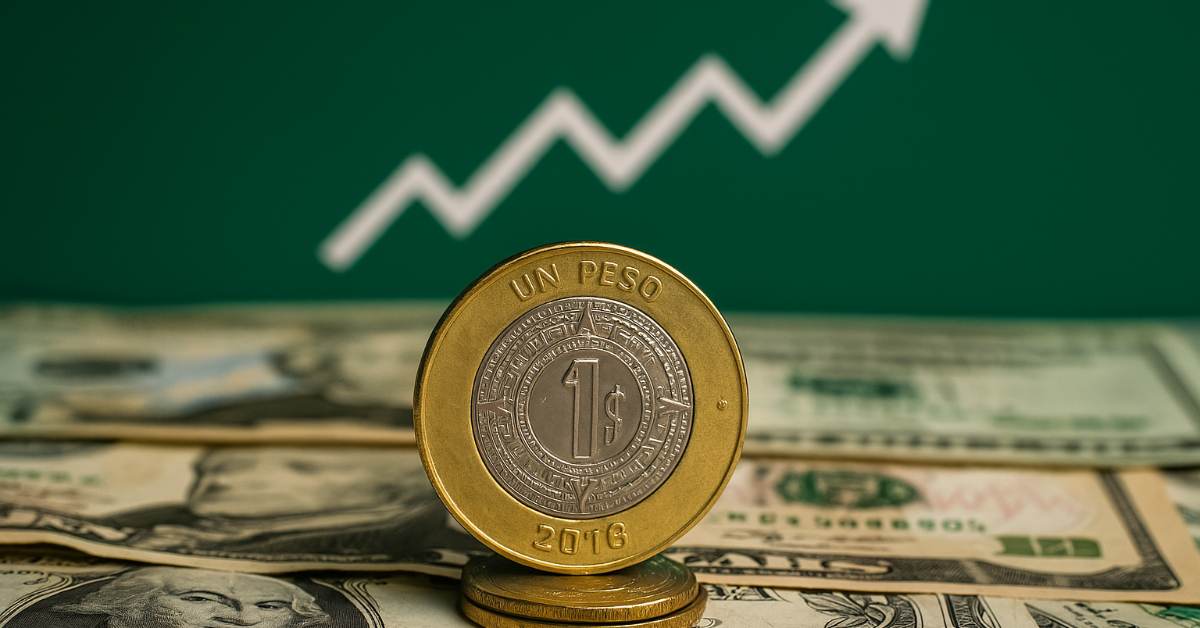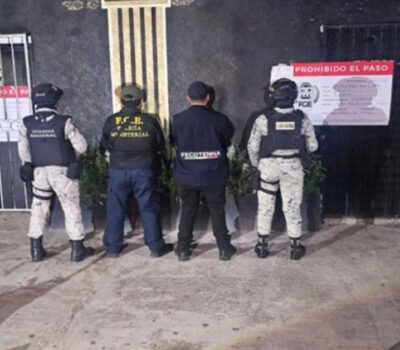The Mexican peso extended its rally to six consecutive days, closing its best quarter since 2020, while the US dollar suffered its weakest start to a year since 1973.
The Mexican peso continued its upward momentum this week, strengthening for the sixth consecutive trading session and capping off its best quarterly performance since 2020. The rally comes as investors closely monitor trade negotiations between the United States and its key partners.
At the close of Monday’s session, the peso settled at 18.7654 per dollar, gaining 8.75 centavos or 0.46% compared to Friday’s close of 18.8529, according to data from the Bank of Mexico (Banxico). The local currency traded in a tight range throughout the day, fluctuating between a high of 18.8994 and a low of 18.8002.
The continued appreciation brings the peso’s monthly gain to 63.03 centavos, or 3.25%, and a quarterly rise of 1.69 pesos, equivalent to an 8.28% improvement—marking its most robust three-month performance since the early pandemic rebound in 2020.
Dollar tumbles to 50-year low
While the peso celebrates significant gains, the US dollar finds itself at the other end of the spectrum. The greenback is off to its worst start to a calendar year in more than five decades. Over the past six months, the dollar has weakened by over 10% against a basket of major trading partner currencies. Not since 1973, the year the United States decoupled the dollar from gold, has the currency seen such a steep early-year drop.
The Intercontinental Exchange Dollar Index (DXY), which measures the greenback’s value against six major currencies, fell by 0.64% to 96.78, reflecting broader weakness amid global shifts in trade policy and monetary outlooks.
Trade optimism lifts Latin American currencies
The peso’s recent strength is buoyed by market optimism surrounding upcoming trade deals with the United States’ largest economic partners. Traders are pricing in the likelihood of new agreements ahead of a deadline set by President Donald Trump. In a notable development, Canada scrapped its proposed digital services tax, signaling a more cooperative stance.
This improved trade outlook, combined with rising expectations of interest rate cuts by the Federal Reserve, has triggered a wave of support for the peso. From its recent high of 19.1683 per dollar on June 20, the currency has regained 2.10%, or 40.29 centavos, in just over a week.
Additionally, the end of a 12-day conflict between Israel and Iran has helped reduce geopolitical tension, further supporting emerging market currencies.
Analysts eye further peso gains
Financial analysts say the peso could gain even more ground in the coming weeks. According to Jacobo Rodríguez of Roga Capital, the peso’s recent breach of the 18.80 mark—considered a key resistance level—could pave the way for deeper gains.
“With today’s move, the price is breaking through 18.80, a very important level that it has held in recent weeks. This would give it greater strength to reach new lows for the year,” Rodríguez said.
Juan Carlos Cruz, a financial consultant, added that the peso has broken short-term support levels and is now targeting 18.50, based on a 15-month Fibonacci retracement model.
Peso gains strong, but not alone
While the Mexican peso’s performance stands out, it is not the only emerging currency benefiting from the current environment. “Most currencies in the emerging bloc are looking to end this month with broad-based gains,” noted Cruz Tapia.
Leading the pack for June is the Brazilian real, which posted a gain of more than 5%, edging out the peso for the top spot. However, the peso remains a strong performer, securing second place among emerging market currencies.
Since the start of the year, the peso has gained 2.11 pesos, or approximately 10.14%, from its January opening rate of 20.8829 per dollar.
Outlook remains positive
Despite starting the year under pressure due to President Trump’s aggressive trade policies, investor sentiment toward the peso has steadily improved. With momentum on its side, the Mexican currency may continue to attract interest as traders seek alternatives to the faltering US dollar.
As global trade dynamics evolve and central banks around the world consider looser monetary policy, the peso’s resilience—and its ability to take advantage of favorable external conditions—could help it stay near the top of the emerging market currency leaderboard.
The Mexican peso extended its rally to six consecutive days, closing its best quarter since 2020, while the US dollar suffered its . . .












